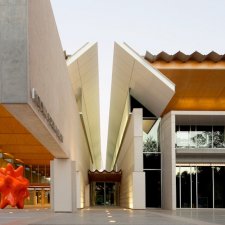- About us
- Support the Gallery
- Venue hire
- Publications
- Research library
- Organisation chart
- Employment
- Contact us
- Make a booking
- Onsite programs
- Online programs
- School visit information
- Learning resources
- Little Darlings
- Professional learning
Sir Gerard Smith (1839-1920), governor, was educated at Eton before purchasing a commission as an ensign and lieutenant in the Scots Fusilier Regiment of Foot Guards, with whom he served in Canada in 1863-1864. Retiring from the army as lieutenant-colonel in 1874, he became a partner in his family’s banking firm. He was high sheriff of Hull in 1880, and a Liberal member of the House of Commons for High Wycombe in 1883-1885. During the latter period he is said to have been groom-in-waiting to Queen Victoria. Appointed KCMG, in October 1895 he was named as governor of Western Australia. He arrived in Western Australia a few months later, at the beginning of the Coolgardie and Kalgoorlie gold booms. He was not expected to take an active part in local politics unless there was a conflict or deadlock; as it was, the colony was under the firm control of Sir John Forrest, premier and treasurer. Although Smith’s duties were mainly social and ceremonial, he alienated Perth’s Catholic community by holding Masonic functions in Government House and laying foundation stones of public charitable institutions with Masonic rites; he was the first grand master of the Sovereign Grand Lodge in Western Australia. In a visit to Sydney in 1896 he talked about the discoveries waiting to be made in Western Australia that would startle the world; for example, it had ‘miles upon miles’ of jarrah forests, timber from which was already being used in England for street paving and railways. Imprudently, however, he invested in mining and speculated elsewhere, erring in his choice of business partners. After various successful legal proceedings against him - which were publicised - and debates in the local parliament about his ‘puffing’ of mining companies, he was invited to return home on never-ending leave. He left Perth in May 1900. His tenure had undermined Western Australian affairs in England and by Federation in 1901 there was no governor in place in Perth. On his return to England, Smith was director of several investment concerns and of a Brazilian railway company.
Collection: National Portrait Gallery
Purchased 2015
Sir Gerard Smith (age 51 in 1890)



On one level The Companion talks about the most famous and frontline Australians, but on another it tells us about ourselves.



Visit us, learn with us, support us or work with us! Here’s a range of information about planning your visit, our history and more!



We depend on your support to keep creating our programs, exhibitions, publications and building the amazing portrait collection!